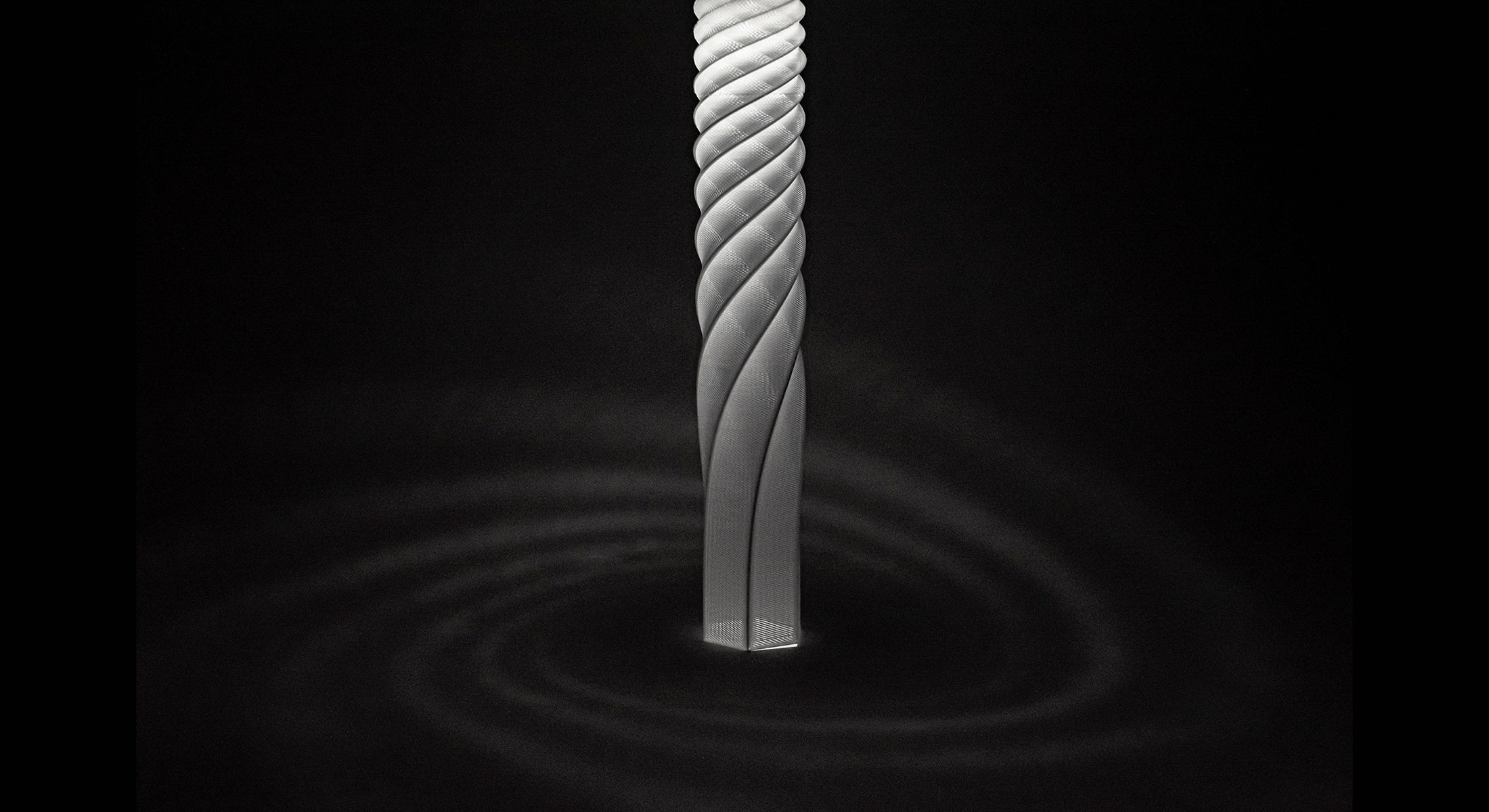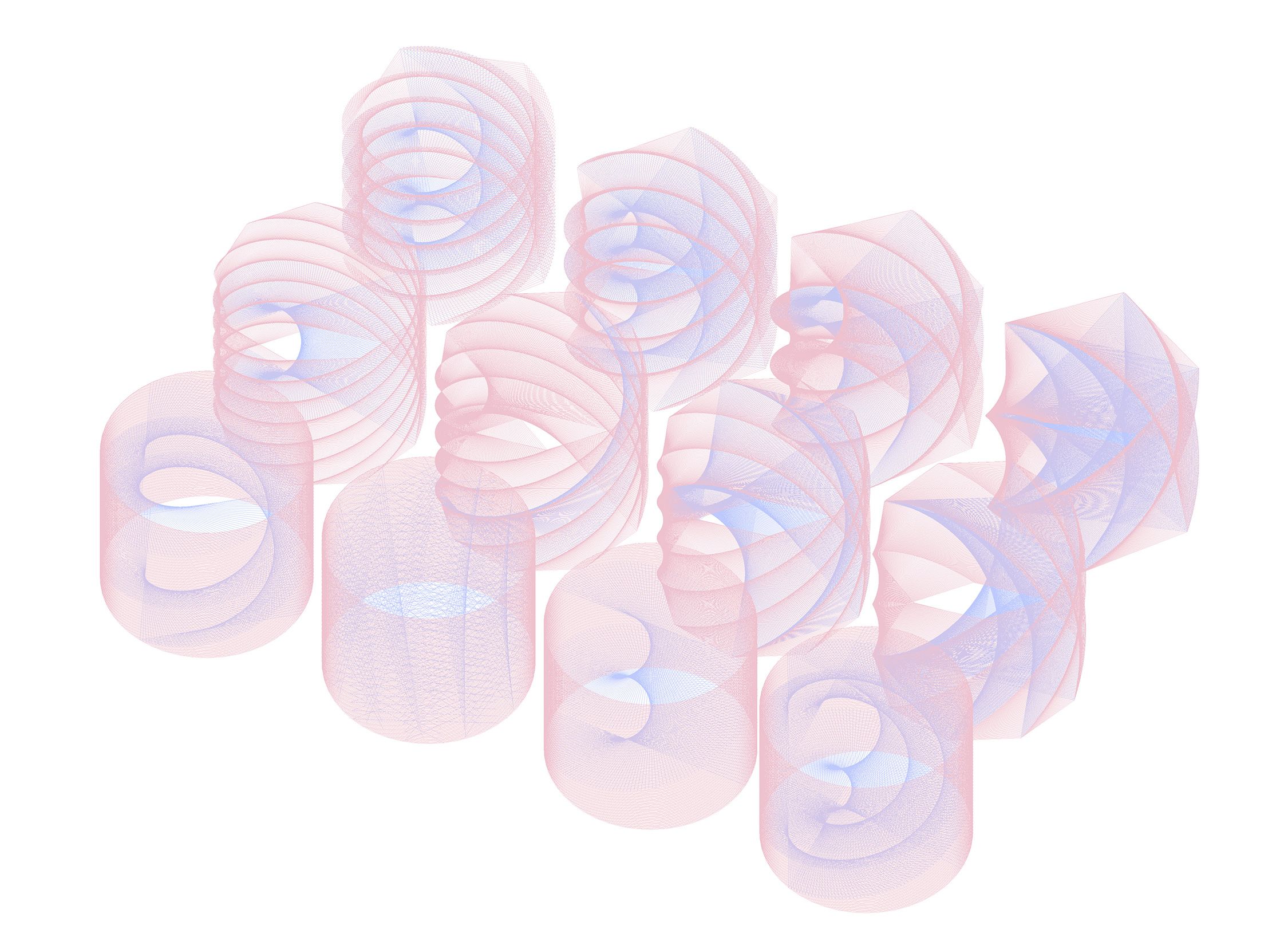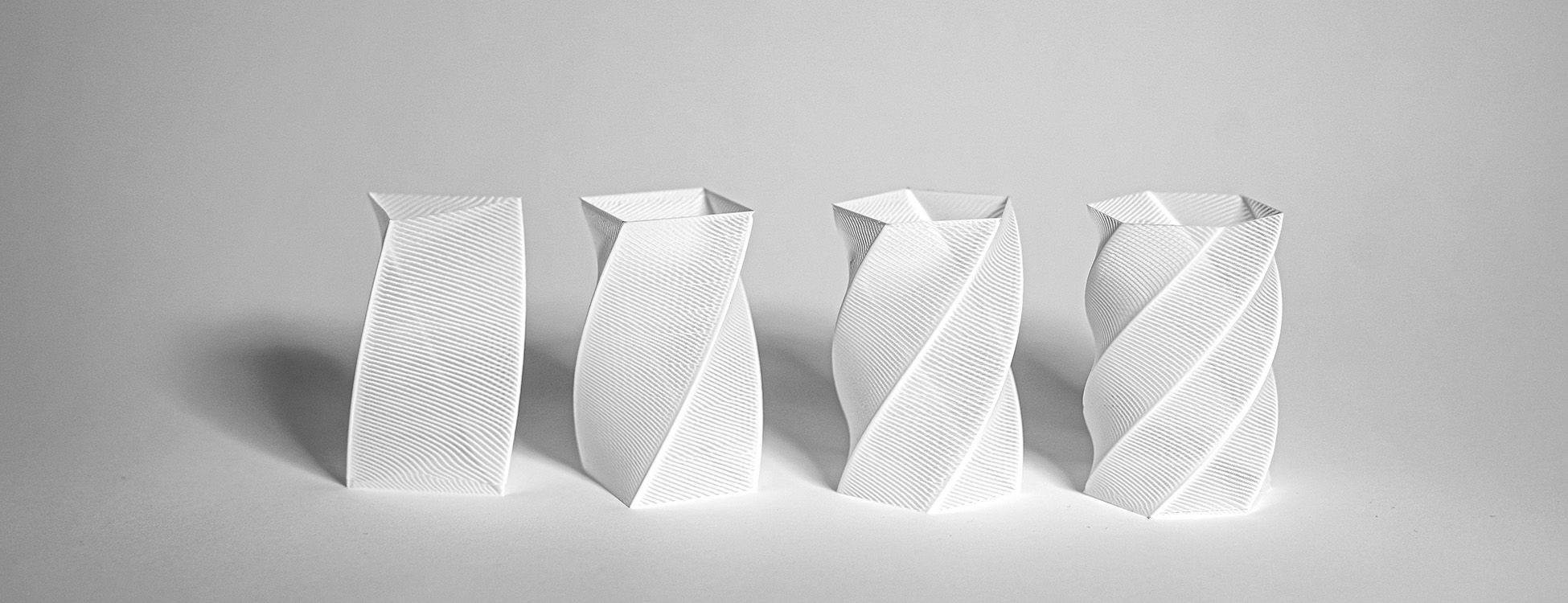Seeing Through
How 3D Printers See-through Objects

This project attempts to print objects with some transparency using one kind of opaque filament in a variety of situations through several different sets of experiments. Although we are now able to use a very wide variety of filament for 3d printing, including different materials, colors, and textures, there are still many transparent materials that could not print "transparent" as we want. In this attempt, some features of the printer itself (feeding speed, nozzle extrusion speed, nozzle temperature, etc.) and the geometric characteristics of the printed object (layer height, spiral angle, interlayer gap, etc.) were used to test whether they had an effect on the transparency of the printing results.
Specifically, the four experiments in this project are: 1) the effect of spiral angle on interlayer gap, 2) the effect of overlapping inner and outer layers on patterns of shadow, 3) the effect of nozzle that use skip-extruding filament on surface patterning and transparency, and 4) the effect of dashed layers on transparency. In this process, we try to use different plug-ins to explore how to weave up two sets of G-codes with different print settings, thus making it possible to achieve different extrusion effects in the same layer.

